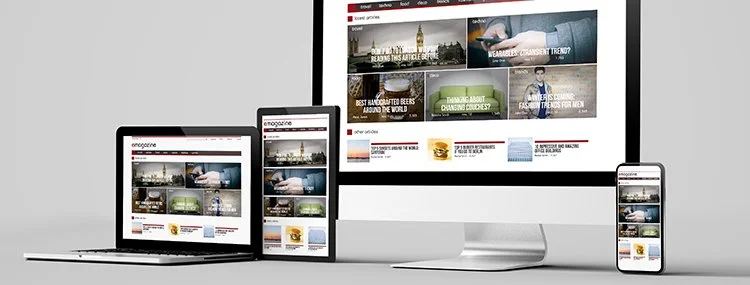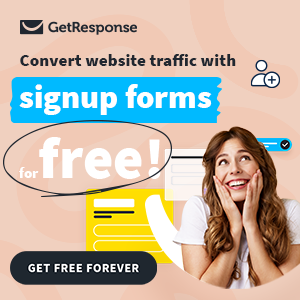It is important to understand everything that contributes to the success of your marketing and sales funnel. And whether or not this surprises you, web design is a very large part of things that will make your business a success! In order to explain why and how we need to work on understanding the connection between web design and conversion rates.
Incorporating images
The first way web design and conversion rates are linked is through the use of images. The proper use of images lets you establish a bond with the viewer. It is much easier to convince them to purchase your product if they can picture themselves using it. At the same time, the images can make them associate the product or services you offer with other things and emotions. For example, an online business that sells toys can include photos of smiling or playing kids in their web design. This, in turn, provides a link between their products and the happiness of children. A parent will view the site and, drawn by the pictures and the ability to imagine their kids having as much fun; they’ll be convinced to convert into a customer. Images are also part of website design that influences SEO, so they’re doubly useful.
The white spaces
Another link between web design and conversion rates are the white spaces. ‘White space’ is the ‘empty’ space on your website pages. They are not just part of minimalist web design that aims to achieve more with less. Even in more ‘normal’ web design, they are an important tool to guide the viewer and make the conversion more likely. This is because sites that are too crowded with links and images have a negative effect on your conversion rates. They distract people too much and make it difficult to focus on any one product or service and follow the conversion funnel to the end. So, website design here can very much make or break your conversion funnel. If used the right way, ‘white space’ instead highlights important parts of a page. Think about it: titles and important parts of a page always have more ‘space’ around them, making them stand out.
Site layout
The layout of your site is an important part of its design, and it, too, can have an enormous influence on your conversion rates. This is particularly relevant in the case of landing pages. A landing page needs to be carefully structured so that the critical information takes center stage. This is already something we mentioned, but if properly emphasized, essential bits of your page make it much easier to catch the eye of potential customers and convert them. If you approach page layout smartly, it can make your website a much greater success!
Navigation cues and menus
Navigation cues and menus are important contributors to the connection between web design and conversion rates. A site needs to be navigable easily if you want the user experience to be pleasant. Sites that force users to struggle to find specific pages or info are much less popular. As a result, their conversion rates are also much lower. Imagine this: would you bother buying a product if it takes half an hour of careful combing through various items just to find it? For most people, the answer is no if there’s an alternative. So, one of the most important parts of web design is making sure that there’s a navigation menu on top of the pages. At the same time, hyperlinks are super useful for navigating to similar or related pages. When you look for a website designer, make sure to get one that does menus well!
Compatibility, speed, and responsiveness
Website design is not just about looks. Of course, this is an important part of it, but the experts from Movers Development warn that you need to pay attention to the more technical aspects of web design, too. Particularly relevant are the compatibility, speed, and responsiveness of a site. Compatibility and responsiveness are rather similar. They both relate to how easily you can use the site on various platforms. If a site can only run optimally on a PC browser and fails to load properly or looks odd on a phone or other devices, then it’s not a good site. And website design is a major contributor to whether a site is properly compatible. Similarly, if the website design is too ‘bulky,’ it can slow the site’s loading speed. Slow websites cause frustration and dissatisfaction, which, in turn, make your conversion rates lower.
Color choices of your web design
The final link between web design and conversion rates is the color palate selection. Colors are one of those elements of web design that may seem innocuous but can absolutely make or break a site’s success. An annoying color scheme immediately predisposes your customers to dislike your products, too. At the same time, different audiences react differently to the same color palette, which means you need to understand your target audience and communicate their preferences to your website designer ahead of time. This is also important when doing your branding since your website should mostly use the same or similar colors! If your audience does think your site’s colors are pleasant, however, it improves their browsing experience and their affinity for your business. This typically means you are much more likely to convert them successfully and continue growing your customer base!
The overall link between web design and conversion rates
The more you work on understanding the connection between web design and conversion rates, the more obvious it becomes that the link is crucial for your success. If you leverage everything that smart web design has to offer, your site will become a success in both audience appeal and SEO. After all, most of the elements also contribute towards making your site better optimized for search engines. This particularly applies to the technical aspects of web design, such as speed and compatibility. If these parameters are low, your SEO score will suffer tremendously. Thus making it more difficult to generate organic leads and lowering your conversion rates indirectly.







